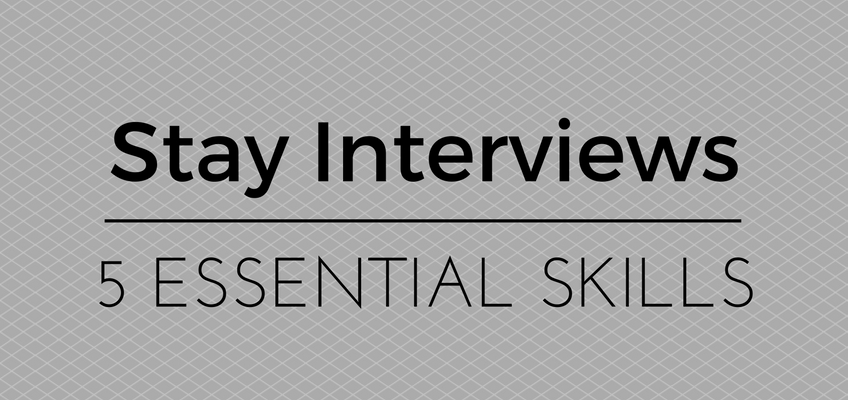By Erin Boettge

You’ve heard of exit interviews, those somewhat awkward meetings where an employee on their way out the door tells you what you did wrong and why they’re leaving.
But what if you could do something simple that could help you avoid that situation? That’s how the concept of the stay interview was developed.
A stay interview is a one-on-one meeting between a leader and both newly hired and continuing employees.
Stay interviews reinforce good relationships, forge new ones, and help repair those that are strained. It involves a structured discussion between leaders and individual employees to learn specific actions that can be taken to strengthen the employee’s engagement, as well as gain insights to improve overall retention within the organization. Great companies are built on that foundation.
We’ve identified five essential skills that will help you conduct effective stay interviews:
1. Listening. Active listening is one of the most important skills you can develop, and it’s essential when communicating with employees. How well you listen significantly impacts your employees, their overall work experience and performance. Listening is key for stay interviews.
2. Take Notes. Taking notes is essential for conducting effective stay interviews because they help you capture all of the key information discussed, create a record of the conversation for reference when you develop your stay plan, and show your employees that their opinions are important.
3. Probing. Probing requires you to connect many dots, to listen carefully to widely related comments, and then to identify the additional one or two pieces of information that complete the picture in your employee’s mind. In other words, great probing leads to fresh discovery.
4. Taking Responsibility. Most executives would say their primary role is to keep the company profitable and grow the company in the future. Managers and employees, though, might think differently; that the main job is providing top services to customers and employees. The difference in these perceptions often causes gaps in how both sides view company decisions. Stay interviews are an effective way to communicate these differences.
5. Develop a Plan. Having listened, probed, and gathered information, now is your time to develop a stay plan with your employees. The resulting stay plan will include the actions you and your employees identify to increase engagement and retention.
Once you have developed a plan, review it with relevant people and discuss who else in the organization might feel the same way, capitalize on strengths and assess where some changes need to be made.
When done properly, stay interviews can be one of the greatest assets to the improvement of your organization.
For a more in-depth understanding of stay interviews and processes, watch our on-demand expert webinar The Power of Stay Interviews for Employee Engagement & Retention, presented by Dick Finnegan, CEO of C-Suite Analytics. Registration is free!
Interested in our training solutions? Let’s talk.
Erin Boettge researches and writes on a variety of business topics, including workplace dynamics, HR strategies, and training trends and technology.

